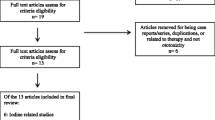Summary
Chlorhexidine gluconate is a derivative of chlorhexidine and is a popular desinfectant with a strong bactericidal action that is widely used for preoperative sterilization in ear surgery. The purpose of this investigation is to ascertain the potential ototoxity of this agent. After topically applying chlorhexidine gluconate solutions to the middle ear cavities of 12 cats, we observed the excised cochleas using both scanning and transmission electron microscope studies. Either 0.05% or 2% chlorhexidine gluconate solutions were infused into the right ear of the test animal through one of two tubes chronically installed in the tympanic bullae. The left ears were utilized as controls and were infused with sterilized physiological saline. The solutions were administered once every other day for three separate infusions. Nine animals were decapitated 7 days after the third application, while the other three animals were sacrificed at 4 weeks. In the 2% chlorhexidine group, we found that hair cells in the organ of Corti had degenerated and had lost their hair bundles over a wide range. This pathology was more marked in the lower cochlear turns. In the animals sacrificed at 4 weeks, the injuries present seemed to have progressed. Even at a clinical concentration of 0.05%, chlorhexidine caused intracellular degeneration but with little surface damage. Our findings would suggest a cause of hearing loss when chlorhexidine is used clinically in the ear.
Similar content being viewed by others
References
Aran J-M, Erre J-P, Guilhaume A, Aurousseau C (1982) The comparative ototoxities of Centamycin, Tobramycin and Dibekacin in the guinea pig. Acta Otolaryngol (Stockh) [Suppl] 390:1–30
Aursnes J (1981) Cochlear damage from chlorhexidine in huinea pigs. Acta Otolaryngol (Stockh) 92:259–271
Ballantyne J (1970) Iatrogenic deafness. J Laryngol Otol 84:967–1000
Bicknell PG (1971) Sensorineural deafness following myringoplasty operations. J Laryngol Otol 85:957–961
Engstrom H, Kohonen A (1965) Cochlear damage from ototoxic antibiotics. Acta Otolaryngol (Stockh) 59:171–178
Hawkins JE jr (1976) Drug ototoxity. In: Handbook of sensory physiology, vol V-3. Auditory system. Springer, Berlin Heidelberg New York, pp 707–748
Hawkins JE jr, Engstrom H (1964) Effect of kanamycin on cochlear cytoarchitecture. Acta Otolaryngol (Stockh) [Suppl] 188:100–106
Johnsson L-G, Hawkins JE, Kingsley TC, Black FO, Matz GJ (1981) Aminoglycoside-induced cochlear pathology in Man. Acta Otolaryngol (Stockh) [Suppl] 383:1–19
Kohonen A (1965) Effect of some ototoxic drugs upon the pattern and innervation of cochlear sensory cells in the guinea pig. Acta Otolaryngol (Stockh) [Suppl] 208:1–70
Kohonen A, Tarkkanen J (1969) Cochlear damage from ototoxic antibiotics. Acta Otolarnygol (Stockh) 68:90–97
Proud GO, Mittelman H, Seiden GD (1968) Ototoxity of topically applied chloramphenicol. Arch Otolaryngol 87:580–587
Author information
Authors and Affiliations
Rights and permissions
About this article
Cite this article
Igarashi, Y., Suzuki, J.I. Cochlear ototoxicity of chlorhexidine gluconate in cats. Arch Otorhinolaryngol 242, 167–176 (1985). https://doi.org/10.1007/BF00454417
Received:
Accepted:
Issue Date:
DOI: https://doi.org/10.1007/BF00454417




